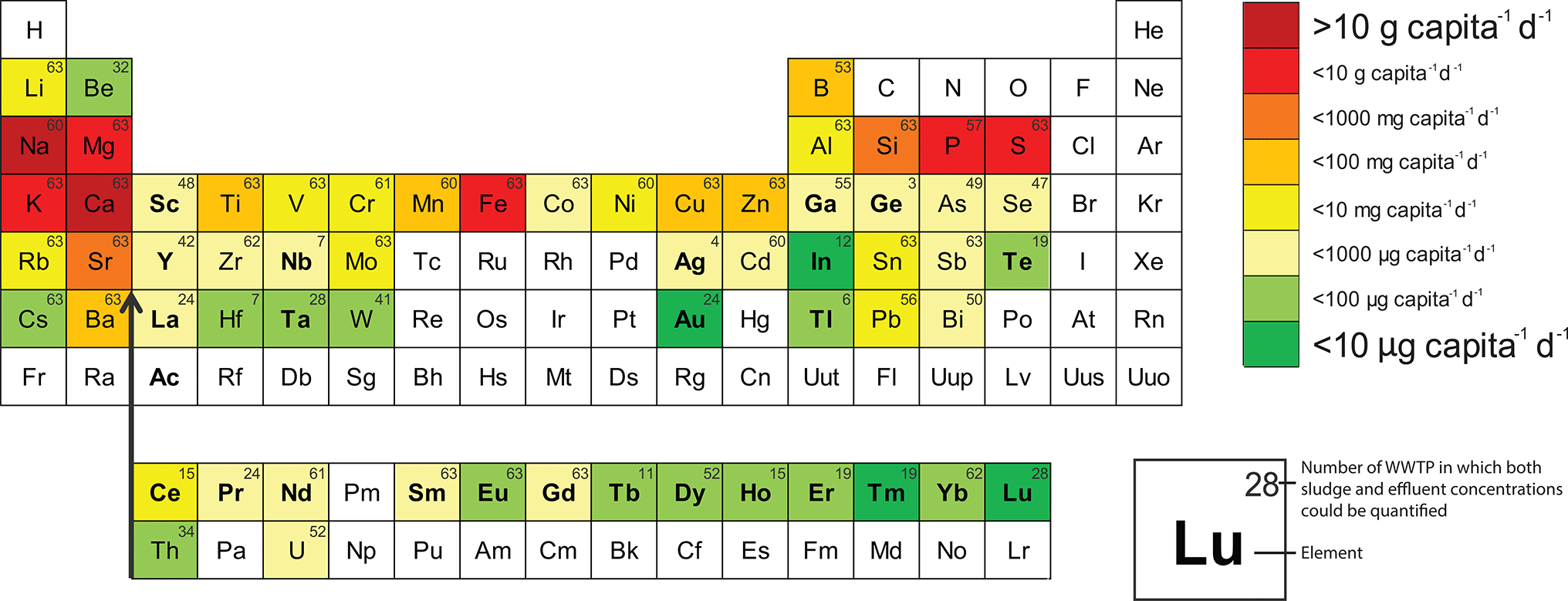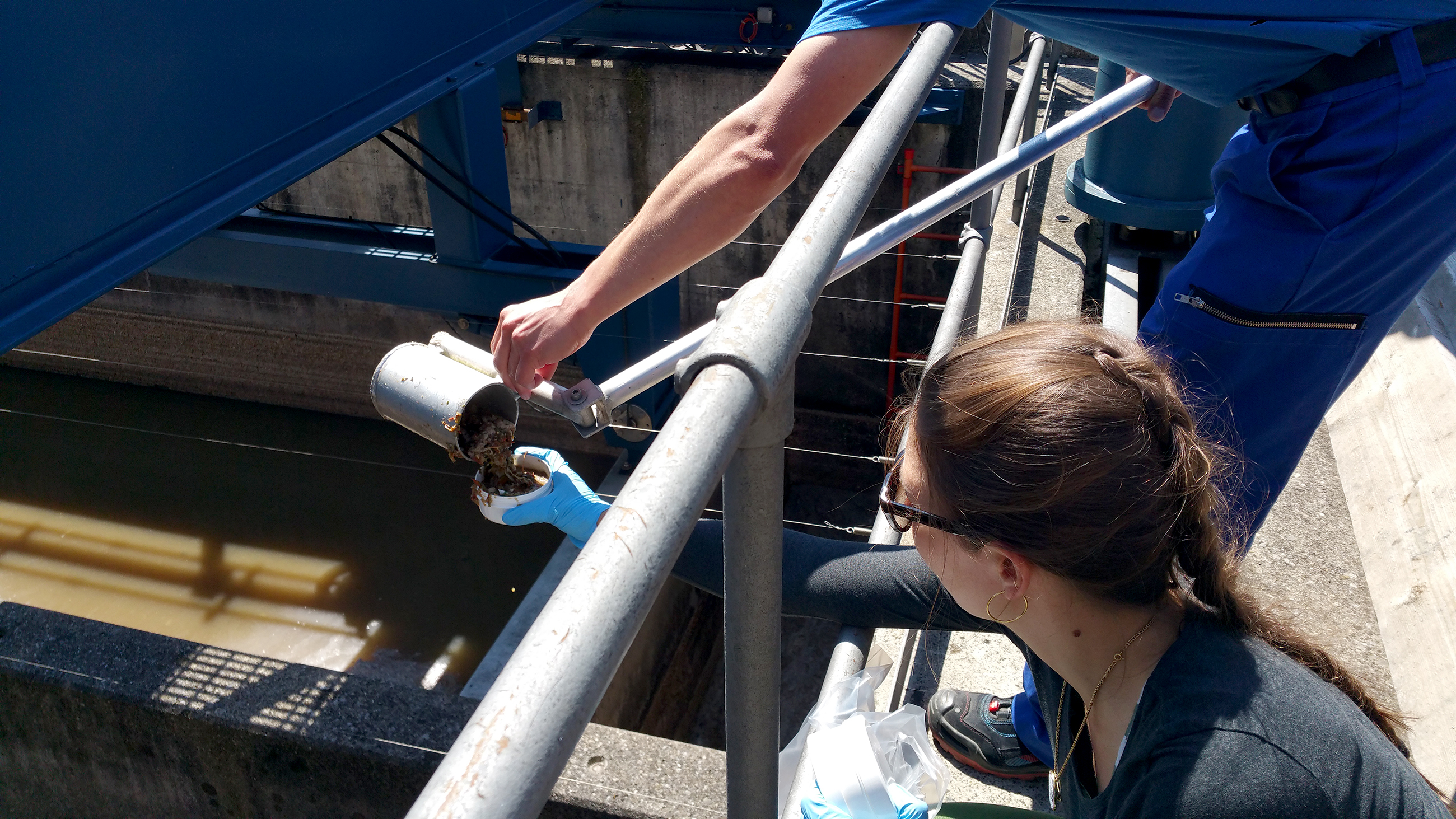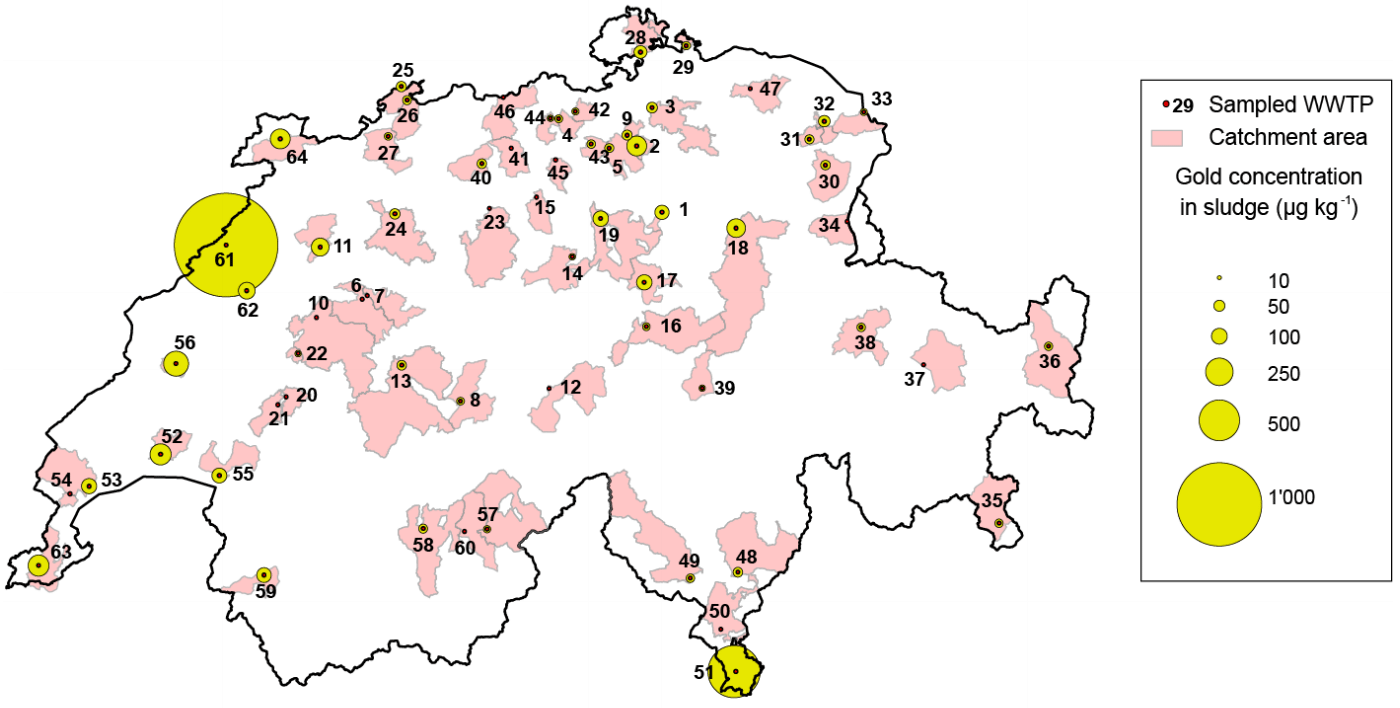 Daily drain into the sewer 62 different items per resident of Switzerland. Illustration: Federal Institute of Water Sciences and Technology
Daily drain into the sewer 62 different items per resident of Switzerland. Illustration: Federal Institute of Water Sciences and TechnologySwitzerland is deservedly called the
golden hub of the world. About 2,600 metric tons of gold pass through this country annually (statistics for 2011). Given that global gold production is 2,700 metric tons (2011). Here are four of the world's largest refineries for the purification of precious metal to a high purity of 99.99% (sample 999.9). Since the country receives not only officially mined bullion, but also metal, bought up from the population, experts estimate that in the average year Switzerland processes 70% of world gold.
It is no secret that in human waste, as well as the world's oceans, one can find half of the periodic table, including rare earth and precious metals, which are contained there in low concentrations. No wonder that in the “golden capital” of the world, sewage is also rich in precious metal. It is possible that the concentration of gold in Swiss wastes is much higher than in Moscow. But only in Russia this question has not yet been asked, and the Swiss scientists have carefully measured the concentration of gold, silver and other elements in the wastewater.
 Gold at refineries in Switzerland is refined to a high purity of 99.99% (sample 999.9). Judging by the size, each bar in the photo weighs 250 g. Photo: Reuters
Gold at refineries in Switzerland is refined to a high purity of 99.99% (sample 999.9). Judging by the size, each bar in the photo weighs 250 g. Photo: ReutersThis is the first in the world so detailed and methodical study of the concentration of chemical elements in bottom sediments at wastewater treatment plants. Swiss chemists took samples at 64 wastewater treatment plants in all cantons. They compiled a
detailed table indicating the concentration of each element at each treatment station. They also calculated the mass of each substance that every citizen of the country pours into the toilet every day (that is, the mass of each chemical element in the sewage system is on average per resident). This figure ranges from a few micrograms (for example, gold, iridium, lutetium) to more than a milligram (for example, zinc, scandium, yttrium, niobium, gadolinium) and more than 1 gram per day (phosphorus, iron, sulfur).
A report on the concentration of elements in wastewater was recently
published by the Swiss Federal Institute for Water Sciences and Technology, part of the Swiss Federal Institutes of Technology (ETH).
According to scientists, about 43 kilograms of gold passes through the sewage system every year. In addition, the toilet is washed annually:
- 3000 kg of silver;
- 1070 kg of gadolinium;
- 1500 kg of neodymium;
- 150 kg of ytterbium;
- etc.
In fact, sewage is a real bonanza, where millions of dollars disappear without a trace. The cost of lost gold and silver is about the same - 1.5 million Swiss francs ($ 1.8 million) for each metal. The remaining listed metals also cost a lot of money. If scientists learned how to effectively extract them from wastewater, this would be a good source of valuable material.
 Sampling of sediments at the Werdhölzli treatment plant in Zurich
Sampling of sediments at the Werdhölzli treatment plant in ZurichSince the largest gold processing plants are located in Switzerland, it can be assumed that here the concentration of gold in the sewage system is higher than the world average. Measurements in different regions of the country confirm this theory. The diagram shows that the concentration of gold and platinum per kilogram of waste in different regions of the country differs a hundred times. In the canton of Jura, with a significantly increased concentration of gold, ruthenium and rhodium, there are watch factories. In another Ticino canton with a high concentration of gold and platinum, there are plants for the purification of precious metals. Scientists even believe that such a high concentration allows us to think about the industrial production of gold and platinum from wastewater.
 Gold concentration per kilogram of bottom sediments at sewage treatment plants in different regions of Switzerland
Gold concentration per kilogram of bottom sediments at sewage treatment plants in different regions of Switzerland Platinum concentration per kilogram of bottom sediments at wastewater treatment plants in different regions of Switzerland
Platinum concentration per kilogram of bottom sediments at wastewater treatment plants in different regions of SwitzerlandConducting this study, the scientists did not set a goal to determine the possibility of commercial production. They were primarily interested in what percentage of the various chemical elements in the rivers of Switzerland fall there from sewage. For example, it turned out that 83% of gadolinium enters the rivers from sewers, as well as 24% of zinc, 7% of lithium and 1% of arsenic. As for phosphorus, measurements confirmed a preliminary assessment: 50% of phosphorus enters rivers from wastewater.
The Swiss also wanted to verify the findings that German environmentalists have made regarding the critical concentration of rare earth metals lanthanum and samarium in the Rhine. Measurements have shown that there is no such problem in Switzerland.
Scientific article
published July 3, 2017 in the journal
Environmental Science & Technology (doi: 10.1021 / acs.est.7b01731,
pdf ).